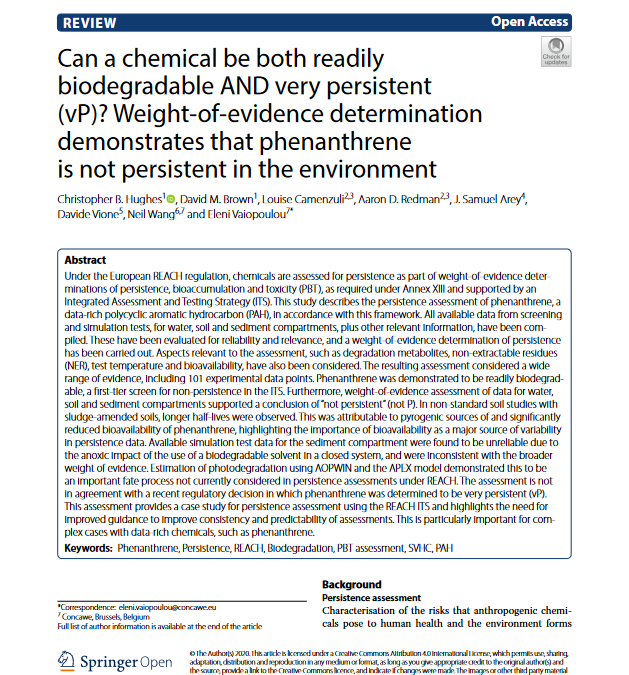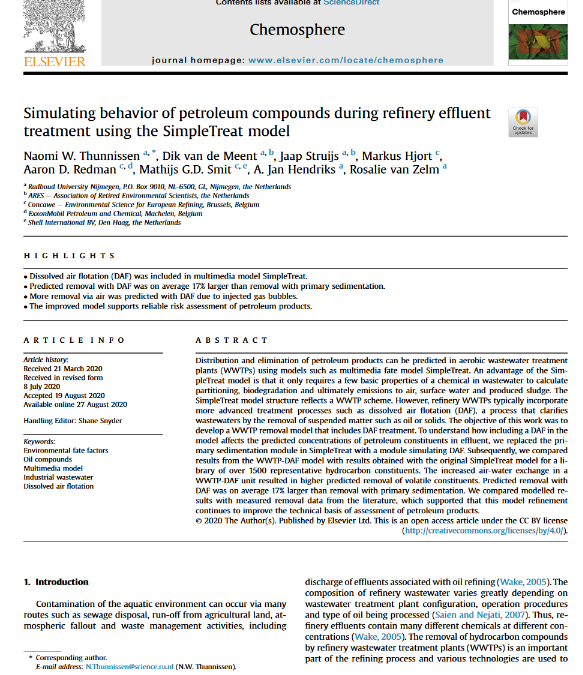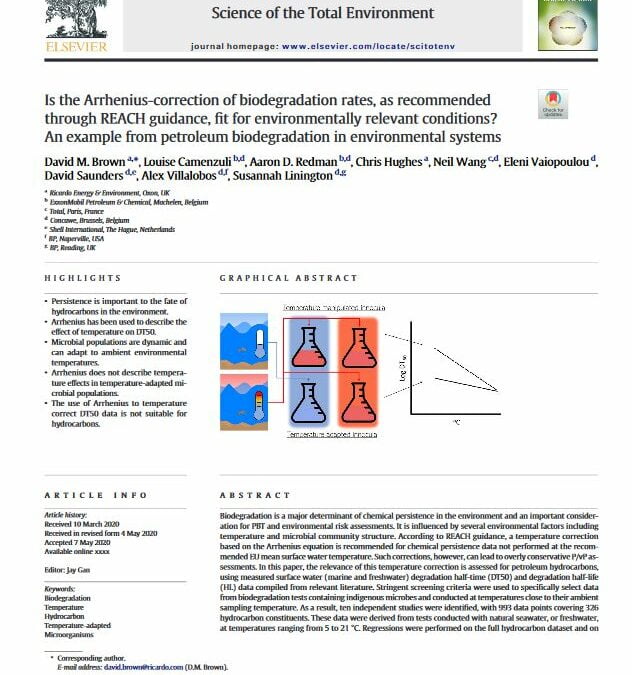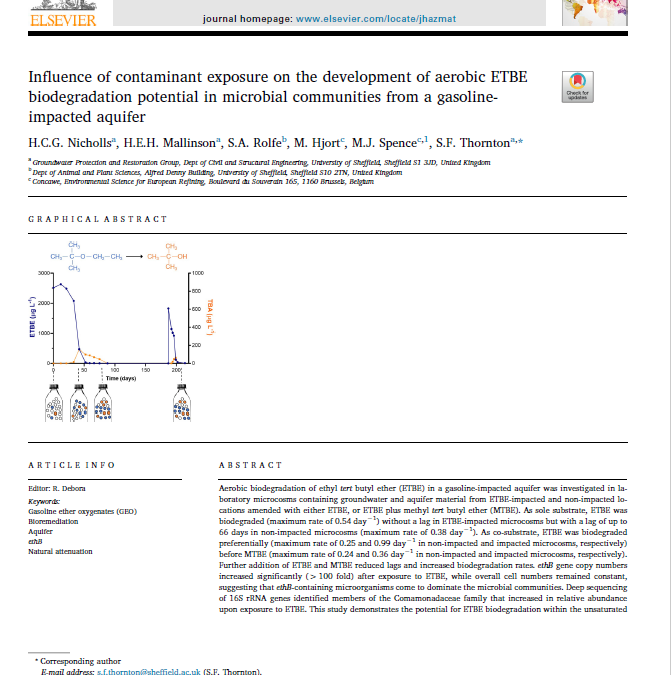


Simulating behavior of petroleum compounds during refinery effluent treatment using the SimpleTreat model
Distribution and elimination of petroleum products can be predicted in aerobic wastewater treatment plants (WWTPs) using models such as multimedia fate model SimpleTreat. An advantage of the SimpleTreat model is that it only requires a few basic properties of a...
Is the Arrhenius-correction of biodegradation rates, as recommended through REACH guidance, fit for environmentally relevant conditions? An example from petroleum biodegradation in environmental systems
Biodegradation is a major determinant of chemical persistence in the environment and an important consideration for PBT and environmental risk assessments. It is influenced by several environmental factors including temperature and microbial community structure....
Biodegradation and fate of ethyl tert-butyl ether (ETBE) in soil and groundwater: A review
This review summarises the current state of knowledge on the biodegradation and fate of the gasoline ether oxygenate ethyl tert-butyl ether (ETBE) in soil and groundwater. Microorganisms have been identified in soil and groundwater with the ability to degrade ETBE...